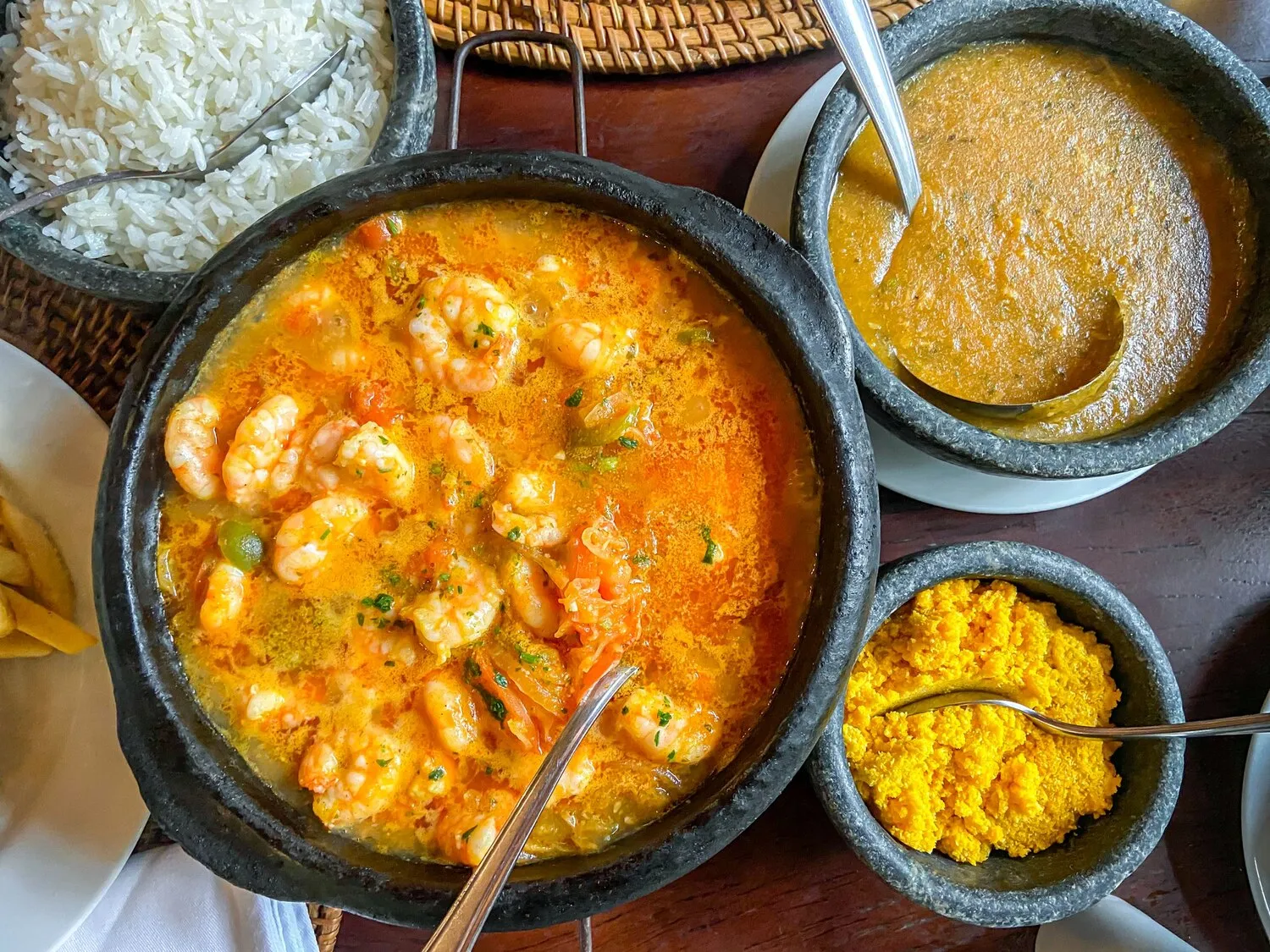
Bouillabaisse
Traditional Provençal fish stew, a Marseille specialty. It usually contains a variety of local fish, shellfish, and vegetables in a rich broth.
Nutrition Facts
* The % Daily Value (DV) tells you how much a nutrient in a serving of food contributes to a daily diet. 2,000 calories a day is used for general nutrition advice.
Les Grandes Halles du Vieux-Port
Bouillabaisse originated in Marseille, France, and its history is tied to the city's fishing community. Legend has it that the dish was created by fishermen who used the less marketable fish and seafood they couldn't sell at the market to create a hearty and flavorful stew. Over time, the dish evolved from a simple fisherman's meal into a more refined and celebrated culinary experience, with variations appearing across the Mediterranean region.
Bouillabaisse is more than just a dish; it's a symbol of Marseille and the Provençal lifestyle. It represents the region's connection to the sea, its culinary heritage, and the communal spirit of sharing a meal with family and friends.
Celebration of Seafood
Bouillabaisse embodies the importance of seafood in the Provençal diet and showcases the variety of fish and shellfish available in the Mediterranean Sea.
Communal Dining
Traditionally, bouillabaisse is served family-style in a large pot, encouraging sharing and conversation among diners. The ritual of serving the broth first, followed by the fish, is an integral part of the experience.
Regional Identity
Bouillabaisse is a powerful symbol of Marseille's identity and is often featured in local festivals and celebrations. It's considered a culinary emblem of the city and the surrounding region.
Rouille and Croutons
The accompaniment of rouille (a garlicky saffron mayonnaise) and crusty bread or croutons is essential. The bread is used to soak up the flavorful broth, and the rouille adds a creamy, aromatic richness to each bite. These elements are integral to the full bouillabaisse experience.
Bouillabaisse boasts a rich and complex flavor profile, characterized by a combination of savory seafood, aromatic herbs, and a hint of saffron. The broth is deeply flavorful and intensely fishy, while the saffron adds a distinct golden hue and subtle sweetness.
The primary flavors in bouillabaisse come from the variety of fish used, which often includes rascasse (scorpionfish), rouget (red mullet), congre (conger eel), and various white fish. Shellfish like mussels, clams, and occasionally lobster or langoustine contribute to the overall seafood intensity. Aromatic vegetables like onions, tomatoes, garlic, and fennel provide a base of sweetness and depth. The addition of herbs such as thyme, bay leaf, and parsley, along with orange zest, contributes to the characteristic Provençal aroma. Saffron is a key ingredient, imparting a unique flavor and color. Finally, a dollop of rouille, a saffron-flavored mayonnaise, is often served with the stew, adding creaminess and enhancing the overall flavor experience.
Freshness is Key
Using the freshest possible fish and seafood is crucial for achieving the best flavor. Choose fish with firm flesh and bright eyes, and shellfish that are tightly closed.
Rascasse is Essential (If Available)
While the exact fish used can vary, rascasse (scorpionfish) is traditionally considered a key ingredient, contributing significantly to the stew's unique flavor. If you can't find rascasse, ask your fishmonger for a suitable alternative with a similar firm texture and strong flavor.
Don't Overcook the Fish
Be careful not to overcook the fish, as it will become dry and lose its flavor. Add the fish to the broth in stages, starting with the firmest varieties and ending with the more delicate ones. The fish should be cooked just until it is opaque and flakes easily with a fork.
Strain the Broth
After simmering the fish and vegetables, strain the broth through a fine-mesh sieve to remove any bones or bits of shell, resulting in a smoother and more refined final product.
Homemade Rouille Makes a Difference
While pre-made rouille is available, making your own will result in a far superior flavor. Use good-quality saffron, garlic, and olive oil for the best results.
Explore additional Stew dishes and restaurants
Explore StewDiscover top dining spots and culinary experiences in Marseille.
Explore MarseilleLearn more about the food culture, restaurant scene, and culinary heritage of France.
Explore France